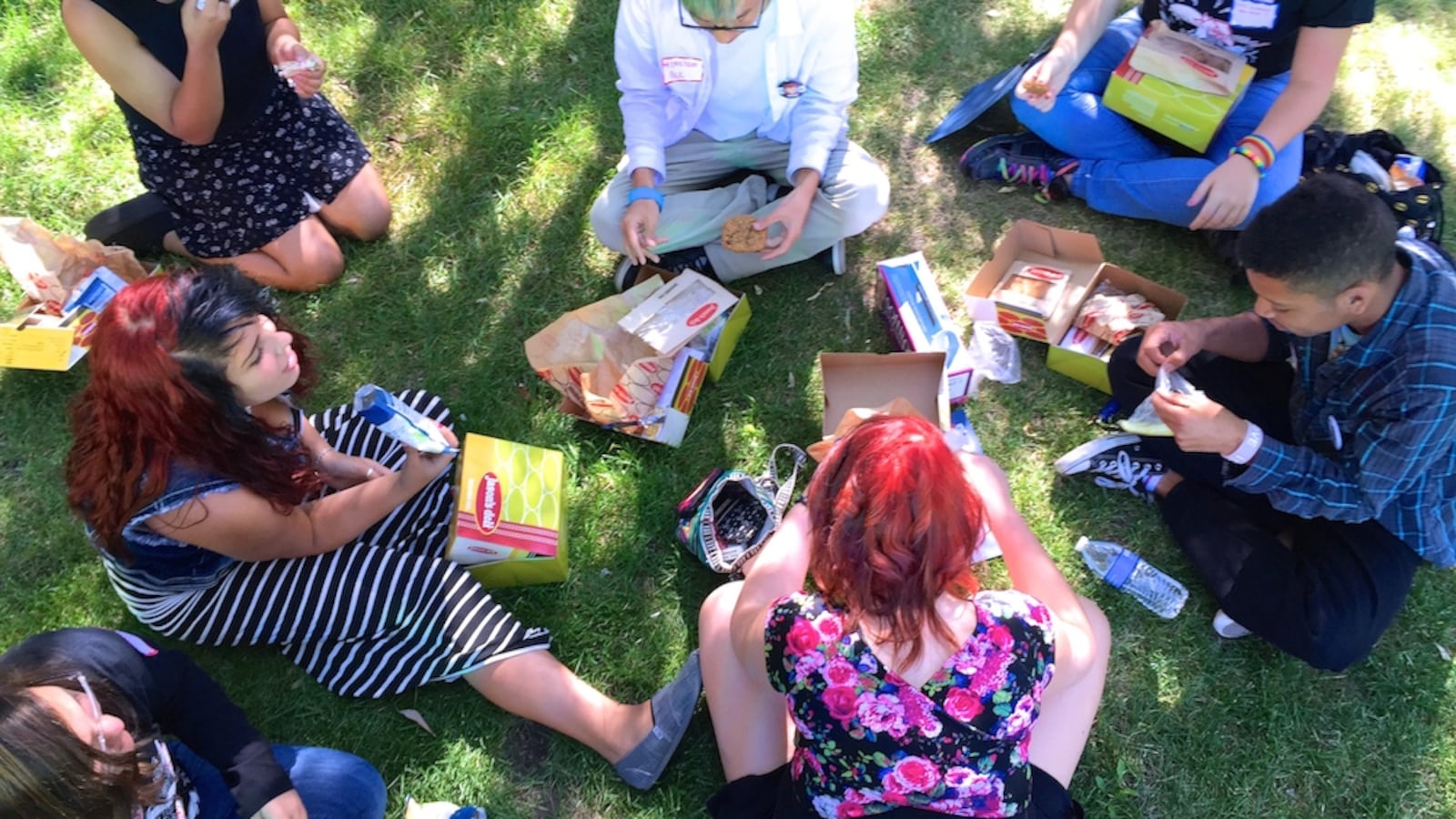While many Colorado school districts have adopted explicit policies against bullying of gay and transgender students, some say singling out populations is not necessary to create a safe environment for marginalized students.
According to a report released Wednesday by One Colorado, the state’s largest gay, lesbian, bisexual and transgender advocacy group, 82 percent of school districts statewide have revised their anti-bullying policies since 2011. That’s up from 37 percent in 2012, when the organization first examined school district policies.
The revisions followed the 2011 passage of a state law that prohibits bullying on the basis of a student’s actual or perceived sexual orientation or gender identity. The bill also included a program that provided funding to help schools update their policies.
Colorado’s legislation was considered a landmark at the time. Meanwhile, protections for LGBT students are coming into new national focus after President Donald Trump rescinded guidance on how schools should accommodate the needs of transgender students.
Daniel Ramos, One Colorado’s executive director, said the organization worked with many school districts after the bill passed in 2011 to develop the proper language for updating policies.
One Colorado has received some pushback, however, from districts that find redrafting their guidelines unnecessary, he said.
“Some schools don’t believe that they have LGBTQ youth or LGBTQ people in their school districts,” Ramos said. “Regardless of whether you have LGBTQ people or LGBTQ families… having bullying policies that reflect actual or perceived identity is important in that it protects all students.”
Three school districts in the Denver area — Westminster, Aurora and Adams 14 — are listed as still not having updated their anti-bullying policies to comply with the law.
Most of the other Colorado school districts that have not updated their policies are small and rural.
The Westminster school board earlier this year passed a resolution stating that the district does not tolerate bullying, harassment or discrimination, including discrimination based on a person’s sexual orientation.
However, Ramos said the resolution doesn’t cut it. He said One Colorado was looking for an explicit anti-bullying policy.
Aurora includes language in its nondiscrimination policy that prohibits targeting students for a number of reasons, including sexual orientation — but does not enumerate that in its anti-bullying guidelines.
Ramos said it is important for districts to be explicit in prohibiting harassment based on specific aspects of a student’s identity in both the anti-bullying and nondiscrimination policies.
According to a report from the Gay, Lesbian and Straight Education Network, policies that explicitly protect LGBT students are more effective than those that do not.
“Just a general anti-bullying policy, one that says bullying is prohibited but doesn’t list any of the characteristics, is as effective as having no policy at all,” Ramos said.
Adams 14 also has policies that do not specifically list protected identities, said Kim Cini, the district’s assistant director for student services.
She said Adams 14’s school board is considering updates to all district policies, but the general language in the anti-bullying and nondiscrimination guidelines is meant to encompass all Adams 14 students.
The Commerce City school district also has rolled out new curriculum this year, aimed at increasing instruction based around practicing empathy for students with different identities and backgrounds, she said.
“Bullying applies to all people, whether we’re explicitly identifying that population or not,” Cini said. “I think we’re going to get a lot further (with social-emotional learning) than talking about what a policy is.”
Ramos said updating policy can be especially impactful for students in predominately Latino districts such as Adams 14.
“I myself, as a gay Latino male, know that I don’t just show up in public as either gay or as Latino or as male — I show up as all those things and then some,” he said. “For students to feel like they can bring their whole selves to school and talk about the experiences that they have as people of color, as LGBTQ folks, as male or female, that’s what we want young people to feel safe enough to able to bring to the classroom.”
Correction: An earlier version of this article reported that the Douglas County School District was in the process of updating its policies. The school board has since completed that process, a spokeswoman said Thursday.

